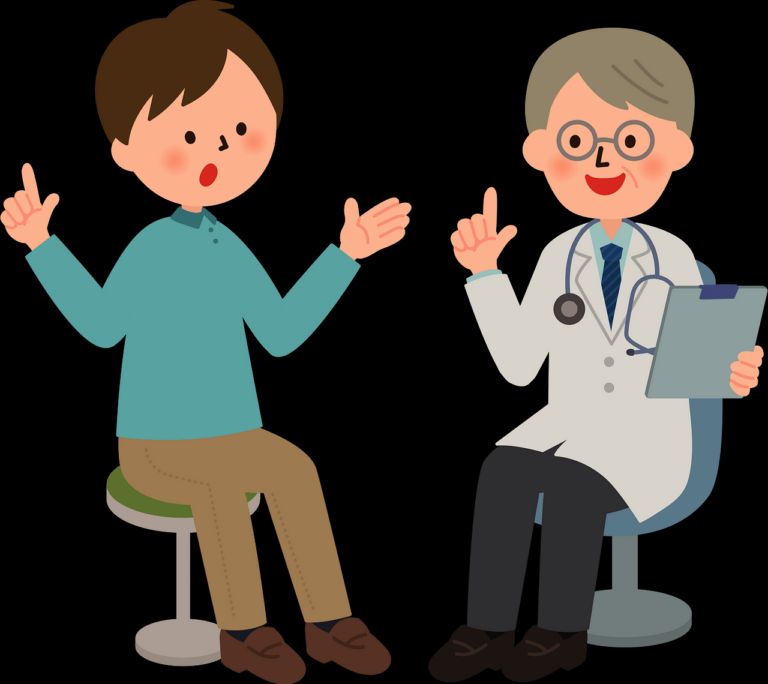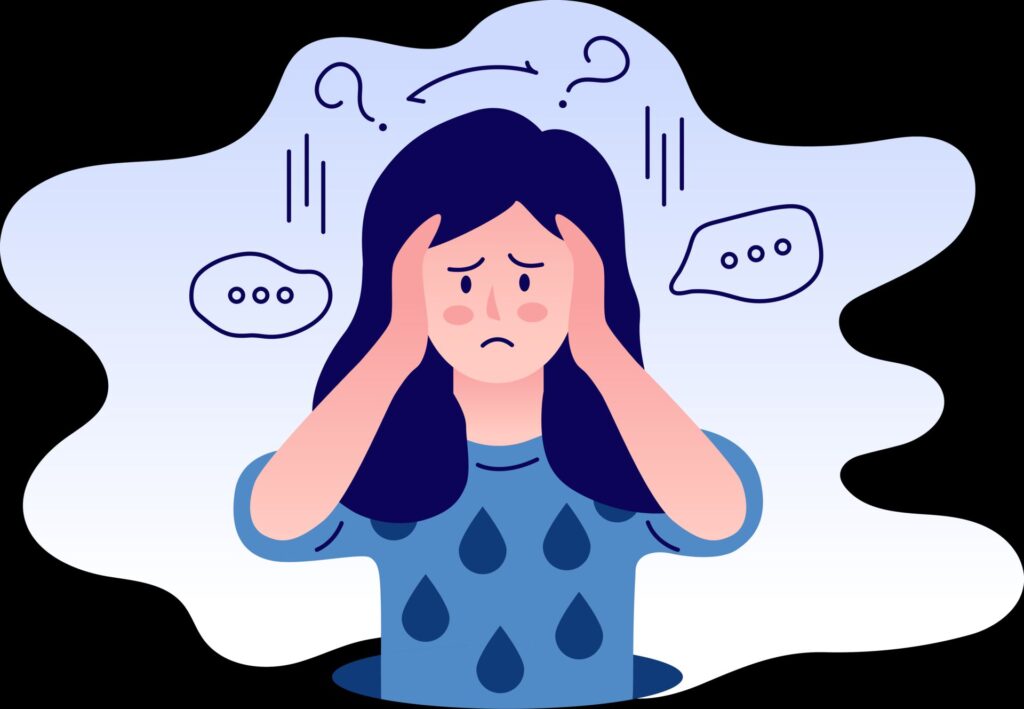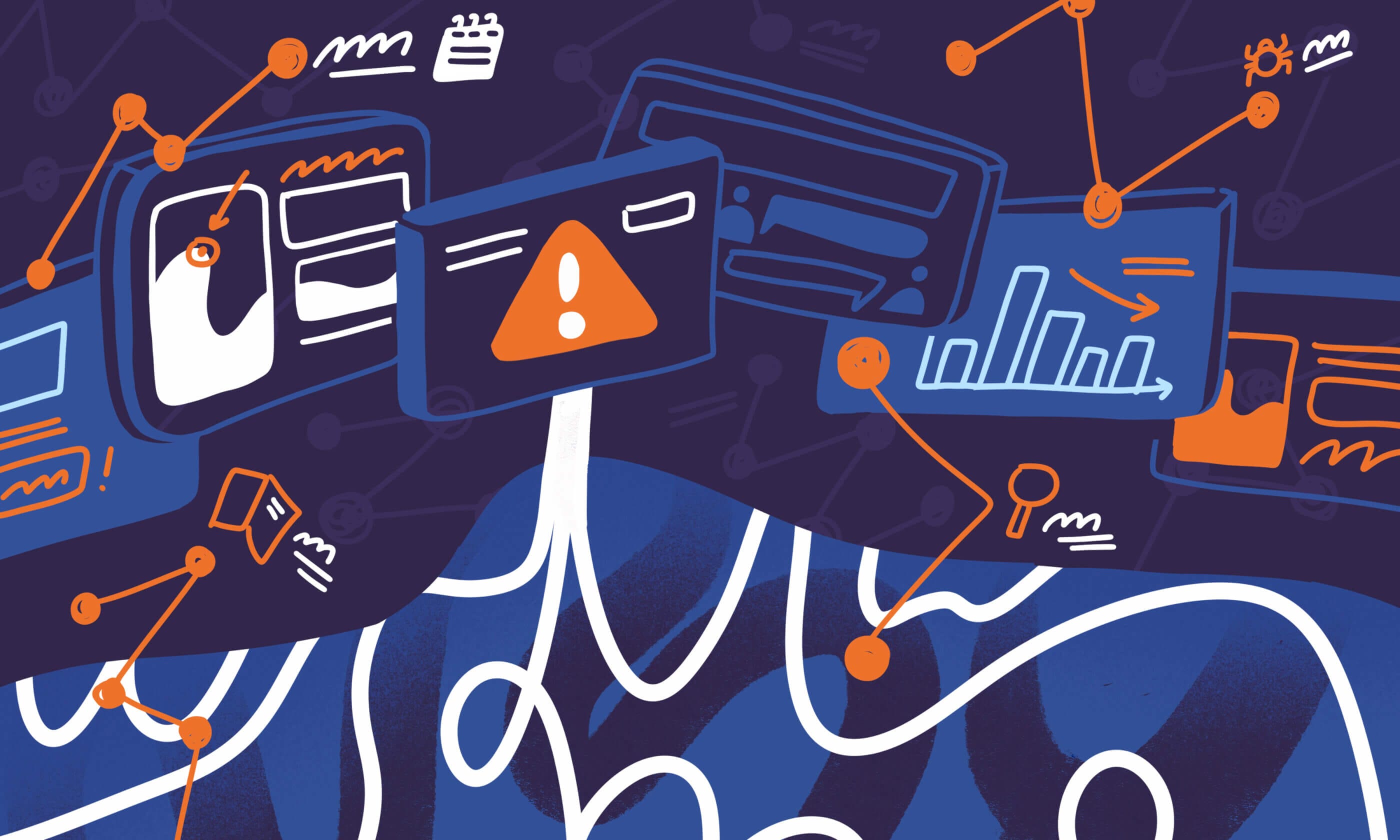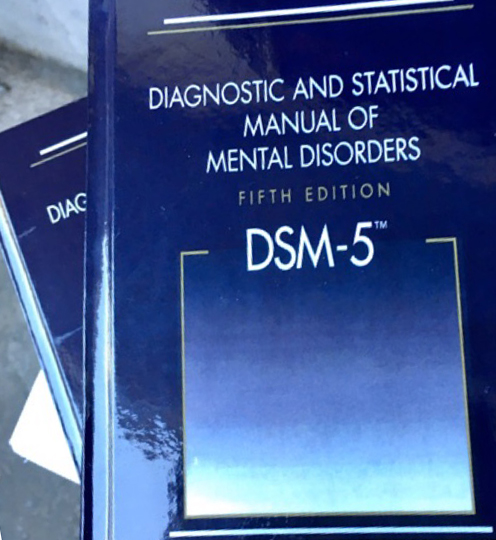
While embracing a nutritious diet is undoubtedly a cornerstone of good health and overall well-being, there exists a critical point where this positive endeavor can transform, crossing a line to become a significant disruption in daily life. In an era saturated with fad diets, the ubiquitous ‘protein-ification’ of almost every food item, and the proliferation of wearable technology meticulously tracking biometrics, it has become remarkably easy to get thoroughly swept up in a wider craze for health obsession. Further complicating matters, the sheer volume of information available online and across social media platforms can make it incredibly challenging to discern what is truly necessary or beneficial for one’s health, particularly concerning nutrition, with countless videos referring to certain foods as “bad” or containing “fake ingredients,” thereby fueling a pervasive societal infatuation with “eating healthy.”
It is precisely at this juncture that a deep and often overwhelming focus on diet can spiral into a condition known as orthorexia. This term encompasses what experts describe as an unhealthy preoccupation with food purity and an obsessive fixation on consuming only what is perceived as the ‘proper’ or ‘healthy’ way of eating. This condition is becoming increasingly common in contemporary society, with some research indicating that pressure stemming from social media plays a substantial role in its rise. Understanding orthorexia begins with recognizing that while the intention may be rooted in health, its manifestation can become profoundly detrimental.
However, distinguishing between genuinely healthy eating habits and the signs of orthorexia can be remarkably challenging, even for seasoned professionals, due to the subtle ways it can emerge and evolve. This article aims to provide an authoritative and in-depth exploration of orthorexia, meticulously examining its definition, the insidious ways it manifests through various symptoms, and the crucial steps one can take if concerns about eating habits arise. Our objective is to equip readers with clear, evidence-based insights to better comprehend this complex condition and foster a more balanced and compassionate relationship with food.

1. **What is Orthorexia? Defining the Unhealthy Fixation**Orthorexia is precisely defined as an unhealthy and often debilitating focus on eating in a healthy way. While the act of consuming nutritious food is inherently beneficial and promotes well-being, when this focus escalates into an obsession, it can paradoxically cause significant damage to one’s overall health and quality of life. The term itself was coined in 1996 by Steven Bratman, MD, a California doctor, who derived it from the Greek ‘orthos,’ meaning ‘proper,’ and ‘orexia,’ which relates to appetite, thus signifying a “fixation on righteous eating.” Since its introduction, many medical professionals have come to accept and recognize this concept as a distinct and concerning pattern of disordered eating.
At its core, orthorexia involves eating habits that lead individuals to reject a wide variety of foods, primarily because these foods are deemed not “pure” enough according to their stringent self-imposed criteria. This often progresses to a point where individuals begin to avoid entire meals that do not meet their exacting standards, especially if they haven’t prepared the food themselves or are uncertain of its origin or ingredients. This constant evaluation and elimination of food choices result in a progressively narrowing diet, driven by a perceived need for absolute ‘cleanliness’ rather than balanced nutrition.
Expert definitions further clarify the nature of this obsession. Beth Auguste, a maternal wellness dietitian, describes orthorexia as “a preoccupation with healthy eating and a fixation on the purity of food.” Similarly, Beth Heise, a registered dietitian with OnPoint Nutrition, characterizes it as “an obsession with what someone perceives as the proper way of eating, or the healthy way of eating.” It is also noted by some experts that orthorexia shares similarities with other officially recognized eating disorders like bulimia and anorexia nervosa, particularly in its underlying themes of food control and an intense, often rigid, relationship with eating.

2. **The Elusive Line: Differentiating Healthy Eating from Orthorexia**One of the most challenging aspects of orthorexia is discerning where the pursuit of a healthy diet ends and an unhealthy obsession begins. Many individuals conscientiously choose nutritious foods to manage specific health markers, such as maintaining healthy cholesterol levels or regulating blood sugar. This makes it difficult to distinguish beneficial, health-conscious eating from a potentially dangerous, restrictive pattern, creating a diagnostic ambiguity even for experienced healthcare providers. The widespread availability of health information online, often presented without nuance, further complicates this distinction, as it fuels a societal infatuation with “eating healthy” that can unintentionally mask orthorexia.
Beth Auguste highlights the inherent difficulty in identifying this condition, even among professionals. She observes, “It’s so hard to spot that even professionals can have trouble spotting it — they kind of question, like, is this person just really healthy, or is [it] bordering on a disorder?” This statement underscores the subtle and often insidious progression of orthorexia, where a genuine desire for health gradually spirals into a rigid and unhealthy fixation, making early recognition a complex endeavor.
The crucial distinction, according to experts, lies in the impact on daily life. Beth Auguste emphasizes that the line is crossed “when it starts to interfere with your activities of daily living.” Registered dietitian Beth Heise elaborates, stating that the focus “winds up becoming less about healthy eating, which is usually what it starts out as, and more about an unhealthy obsession with food purity or ‘clean eating,’ or ‘proper eating.’” This shift from a flexible, health-supportive approach to an inflexible, all-consuming fixation marks the transition from healthy eating to orthorexia.
3. **Orthorexia’s ‘Subclinical’ Status: Navigating Diagnosis and Recognition**Understanding orthorexia requires acknowledging its current standing within the medical and psychological communities, particularly concerning official diagnoses. It is important to clarify that orthorexia is not presently listed in the DSM-5 (Diagnostic and Statistical Manual of Mental Disorders, 5th Edition). The DSM-5 serves as the definitive official handbook utilized by mental health professionals to diagnose mental health conditions, including other eating disorders like anorexia nervosa and bulimia nervosa. Its absence from this manual means there are currently no universally accepted official diagnostic criteria or specific clinical diagnosis codes for orthorexia.
Despite its non-inclusion in the DSM-5, orthorexia is far from unrecognized within the professional healthcare community. Dietitians Beth Auguste and Beth Heise both articulate a strong expectation that orthorexia will eventually achieve the status of an official diagnosis, reflecting its growing prevalence and impact. Auguste further clarifies its current classification, stating, “It’s subclinical disordered eating, so it’s not something that has a clinical diagnosis code, but it’s widely recognized in the disordered eating community.” This ‘subclinical’ designation indicates that while it may not yet meet the criteria for a formal clinical diagnosis, its characteristics and detrimental effects are well-documented and understood by specialists in eating disorders.
The National Eating Disorders Association also acknowledges orthorexia, indicating a broader professional recognition beyond official diagnostic manuals. The ongoing research dedicated to this condition by various institutions and experts underscores its significance as a growing public health concern. This concerted effort to study and understand orthorexia highlights the medical and psychological communities’ commitment to eventually establish clear diagnostic pathways and effective treatment strategies for individuals affected by this increasingly common obsession with ‘healthy’ eating.

4. **Symptom Spotlight: Extreme Food Restrictions**One of the most telling indicators that an individual’s focus on healthy eating may have developed into orthorexia is the presence of extreme food restrictions. These restrictions are distinctive because they are not imposed due to genuine allergies, diagnosed intolerances, or specific dietary recommendations from a healthcare provider. Instead, they are self-imposed and often become increasingly rigid over time, driven by an internal, unyielding set of rules about what constitutes ‘pure’ or ‘healthy’ food.
These severe dietary limitations can manifest in ways strikingly similar to other eating disorders, such as anorexia nervosa. Beth Auguste explains that orthorexia “can show up some of the same ways that anorexia shows up, where it can be restricting — not eating certain food groups, having a lot of anxiety if you are not having full control over the food that you’re eating and the source that it comes from.” This desire for absolute control extends not only to the types of food consumed but also to their source, preparation, and even the circumstances under which they are eaten.
Individuals struggling with orthorexia often find themselves creating highly specific and inflexible rules regarding their food intake. For example, Beth Heise describes a scenario where one might mandate eating only brown rice, strictly prohibiting any exceptions for white rice. Dr. Kasey Goodpaster provides a crucial distinction, noting that while anorexia nervosa is characterized by restricting the *quantity* of food, orthorexia specifically focuses on the *quality* of food, often leading to the elimination of entire food groups like all sugar, carbohydrates, or dairy, based on a personal, often unfounded, perception of their ‘healthiness’ or ‘purity.’ This constant narrowing of acceptable foods can severely limit nutritional intake and diversity.

5. **Symptom Spotlight: Social Life Disruption**A critical symptom that signals the progression from health-conscious eating to orthorexia is the significant negative impact it has on an individual’s social life. Food and shared meals are fundamental components of human connection and social engagement. When an individual’s rigid dietary rules become so inflexible that they preclude participation in social activities, it indicates a profound and concerning disruption to their overall well-being and ability to connect with others.
Beth Auguste underscores this point, stating, “When it crosses the line is when it starts to interfere with your activities of daily living.” If an individual experiences intense stress or anxiety about food, leading them to decline social invitations—perhaps because they are uncertain about the food situation at an event, or they cannot guarantee control over the menu and ingredients—this behavior becomes a substantial cause for concern. Such avoidance signals a deeper issue than mere preference or dietary discipline.
The ramifications extend to a person’s comfort and engagement within the broader social world. Auguste explicitly states, “When it impacts your ability to live socially in the world, comfortably, then it’s a problem that you should address.” Beth Heise further observes that for those with orthorexia, the obsession with food can become so central that “it winds up being less about the average person concerned about healthy food, and more just really obsessing about it where it’s almost your personality.” This all-consuming focus can tragically lead to social isolation, strained relationships, and a significant reduction in overall quality of life, as the rigid eating patterns make typical social interactions revolving around food exceedingly challenging.

6. **Symptom Spotlight: Compulsive Ingredient Analysis**While the practice of examining ingredient lists and nutritional labels is a sensible and often necessary habit for individuals managing allergies, pursuing specific health goals, or simply making informed dietary choices, for someone struggling with orthorexia, this behavior intensifies into a compulsive and profoundly time-consuming obsession. What begins as a responsible inquiry evolves into a relentless and often anxious scrutiny of every detail, far beyond what is typically considered healthy or practical.
Beth Heise aptly describes this extreme focus, noting that individuals may find themselves “compulsively, all the time, analyzing all the ingredients.” This is not a cursory glance; it involves an exhaustive and often anxious deep dive into every component of a food product, seeking to identify any perceived ‘unhealthy’ or ‘impure’ elements. This obsessive analysis can consume an inordinate amount of time, manifesting as “hours and hours spent meal planning or researching the nutrition of every ingredient that’s going into your food,” fundamentally disrupting their daily routines and priorities.
The preoccupation extends well beyond merely reading labels, encompassing profound concerns about food sources and preparation methodologies. Individuals with orthorexia invest significant mental energy into scrutinizing whether certain foods are “clean” or “pure” enough for consumption, harboring worries about potential contaminants like pesticides in vegetables, hormones used in dairy production, or the presence of artificial flavors and preservatives. This deep and constant engagement with every minute detail of food often compromises their capacity to function effectively in other areas of daily life, leading to discernible decreases in productivity, engagement in social activities, and overall enjoyment.

7. **Symptom Spotlight: Anxiety and Guilt from Breaking Rules**A hallmark emotional indicator of orthorexia is the profound distress experienced when an individual’s self-imposed food rules are either broken or even merely considered for deviation. This manifests as pervasive anxiety surrounding nearly all food choices and an intense, often debilitating, sense of guilt that follows any perceived transgression against their rigid dietary standards. This emotional burden is a significant red flag, distinguishing orthorexia from a genuinely healthy relationship with food.
Beth Heise provides crucial insight into this internal struggle, stating, “I think the line comes when you start to feel like you’re thinking about [healthy eating] all the time.” She further elaborates on the emotional cues, explaining, “If you feel like you have anxiety … you’re nervous about eating something … and you feel like that more often than not, then that could be a sign that maybe you’re thinking about it too much.” This constant state of nervousness and the overwhelming guilt experienced after eating something deemed ‘unclean’ or ‘unhealthy’ are critical diagnostic markers.
The mental health implications of this symptom are substantial. Heise stresses that feeling guilty after breaking any of one’s food rules is a clear and urgent sign of a problem. Beth Auguste adds a vital warning: if thoughts about food begin to disrupt one’s mental health at all, it is imperative to consider consulting a professional. Moreover, if this intense preoccupation with food purity starts to interfere with physical health, it is unequivocally a red flag, underscoring the serious psychological and physiological consequences that stem from this relentless pursuit of dietary perfection. Such feelings of guilt and self-loathing can even compel individuals toward dangerous “purification” rituals, such as extreme cleanses or fasts, further jeopardizing their well-being.
Navigating the complexities of orthorexia extends beyond identifying its subtle emergence and initial symptoms; it crucially involves understanding its far-reaching consequences and the comprehensive pathways available for support and recovery. The condition, though often rooted in a desire for health, can paradoxically undermine both physical and mental well-being, demanding a balanced and informed approach to truly foster a healthy relationship with food.

8. **The Physical Toll: Malnutrition and Medical Complications**While orthorexia primarily manifests as a psychological preoccupation, its profound impact extends directly to physical health, often leading to serious medical complications. The extreme food restrictions individuals impose upon themselves, driven by an unyielding quest for purity, frequently result in a shortage of essential nutrients. This deprivation can quickly escalate to severe malnutrition, a state where the body is starved of the vital building blocks it needs to function properly.
Such nutritional deficiencies can trigger a cascade of adverse physical effects. Individuals with orthorexia may develop anemia, a condition characterized by a lack of healthy red blood cells, leading to fatigue and weakness. An abnormally slow heart rate, known as bradycardia, is another serious concern, along with digestion problems that impair nutrient absorption. Severe malnutrition can also cause dangerous electrolyte and hormonal imbalances, metabolic acidosis, and a general weakening of the immune system, leaving the body vulnerable to illness. These physical complications are not to be underestimated, as they can, in severe cases, become life-threatening. The medical consequences further include issues like bone density loss, low levels of healthy blood cells, low sodium levels, and even collapsed lungs, underscoring the critical need for intervention.

9. **The Psychological Burden: Anxiety, Guilt, and Preoccupation**Beyond the physical manifestations, orthorexia imposes a significant psychological burden on those affected, often leading to a debilitating cycle of anxiety, guilt, and relentless preoccupation. Individuals with orthorexia experience intense frustration and distress when their rigid food-related habits are disrupted, leading to heightened anxiety around nearly all food choices. This emotional turmoil is particularly acute when they contemplate or actually break their self-imposed dietary rules, triggering intense feelings of guilt and self-loathing. These overwhelming negative emotions can even compel individuals toward dangerous ‘purification’ rituals, such as extreme cleanses or fasts, in an attempt to atone for perceived dietary transgressions.
A considerable amount of mental energy is consumed by scrutinizing food. People with orthorexia spend extensive time and effort analyzing whether certain foods are ‘clean’ or ‘pure’ enough for consumption. This includes profound concerns about potential contaminants like pesticides in vegetables, hormones used in dairy production, or the presence of artificial flavors and preservatives in processed items. This relentless engagement with every minute detail of food often extends beyond meal times, with hours spent researching, cataloging, weighing, and measuring food, or meticulously planning future meals.
This constant, all-consuming preoccupation with diet profoundly compromises an individual’s capacity to function effectively in other areas of daily life. The mental energy diverted to food leaves less for work, studies, or personal relationships, leading to discernible decreases in productivity, engagement in social activities, and overall enjoyment of life. The internal struggle and relentless self-monitoring can overshadow nearly every aspect of their existence, trapping them in a cycle of worry and self-judgment.

10. **The Social Fallout: Isolation and Strained Relationships**Orthorexia’s insidious nature extends its reach into an individual’s social sphere, often resulting in profound isolation and strained relationships. The strict, self-imposed rules dictating what can be eaten, how it’s prepared, and even when or with whom, make participation in common social activities revolving around food exceedingly challenging. Individuals frequently feel anxious or threatened when they consider giving up their perceived control over food, leading them to avoid situations where their dietary regimen might be compromised.
This avoidance manifests as turning down invitations to dinner parties, refusing to eat out with friends, or declining family meals if they are uncertain of the food situation or cannot guarantee control over the menu and ingredients. Such rigid eating patterns actively create barriers to social engagement, fundamentally disrupting the universal human experience of sharing meals and connecting with others. The stress and anxiety surrounding food become so overwhelming that it interferes with the individual’s ability to live comfortably within a social world, as noted by Beth Auguste, a maternal wellness dietitian.
Further complicating social interactions is the tendency for individuals with orthorexia to develop intrusive food-related thoughts and, in some cases, a sense of moral superiority regarding their own eating habits compared to others. This judgmental perspective can naturally lead to friction and misunderstanding in relationships. As Beth Heise, a registered dietitian, observes, the obsession with food can become so central that “it winds up being less about the average person concerned about healthy food, and more just really obsessing about it where it’s almost your personality.” This all-consuming focus tragically leads to social isolation, a common outcome among those diagnosed with orthorexia, as the condition erects formidable barriers between the individual and their support networks.

11. **Understanding the Roots: Causes and Risk Factors**While anyone can potentially develop an eating disorder, including orthorexia, certain biological, psychological, and social/cultural factors can significantly elevate an individual’s risk. Understanding these underlying causes is crucial for both prevention and effective intervention. On the biological front, having a close relative with an eating disorder, a personal history of dieting, or living with type I diabetes can predispose an individual to developing orthorexia. These factors suggest a genetic or physiological vulnerability that may influence one’s relationship with food and body image.
Psychological factors play a profound role, with traits such as perfectionism, a pervasive dissatisfaction with one’s body, or a history of anxiety being strong indicators. Individuals who exhibit a heightened need for control, often seen in conditions like generalized anxiety disorder (GAD) or obsessive-compulsive disorder (OCD), may find themselves drawn to the rigid structures and perceived control offered by strict dietary regimens. Dr. Kasey Goodpaster, a psychologist, highlights that the obsession with ‘clean’ eating can be seen as “another manifestation of our diet culture, in which there is a heavy emphasis on thinness often masked by a desire for health.”
Social and cultural influences are also powerful drivers in the rise of orthorexia. Being teased or bullied about weight, experiencing family trauma, or constantly buying into the societal idea of an ‘ideal’ body can contribute to an unhealthy fixation on food and appearance. The pervasive nature of social media, with its “constant exposure to curated images of seemingly ‘perfect’ bodies and ‘healthy’ eating habits,” creates an environment that normalizes extreme dieting. This reinforces the dangerous idea that adhering to strict dietary rules is the ultimate key to achieving health and success, fueling the very obsession that defines orthorexia.

12. **Towards Official Recognition: Proposed Diagnostic Criteria**Despite its widespread recognition and the growing body of research, orthorexia is not yet officially listed in the DSM-5 (Diagnostic and Statistical Manual of Mental Disorders, 5th Edition), the definitive handbook for mental health diagnoses. This means there are currently no universally accepted official diagnostic criteria or specific clinical codes. However, both Beth Auguste and Beth Heise, experienced dietitians, anticipate that orthorexia will eventually achieve official diagnostic status, reflecting its increasing prevalence and impact within the disordered eating community. It is currently categorized as ‘subclinical disordered eating,’ acknowledging its characteristics without a formal clinical diagnosis.
In an effort to move towards official recognition, Steven Bratman, MD, who coined the term, and Thomas M. Dunn, PhD, proposed a two-part diagnostic criterion in 2016. Criterion A focuses on the individual’s obsessive behavior and emotional distress. It states that the person will exhibit an obsessive focus on healthy eating and experience significant distress over food choices they deem unhealthy. This might lead to unintended weight loss. Additionally, they will compulsively follow and become obsessed with rules about food believed to promote health. Breaking these rules will induce fear of disease, along with intense anxiety and shame over their food choices. A key aspect of this criterion is that these rules become increasingly harsher over time, potentially leading to extreme practices like cleanses.
Criterion B outlines the mental health and physical problems that arise from these rigid behaviors. It specifies that the restricted diet can lead to malnutrition, severe weight loss, or other significant medical complications. Furthermore, the individual’s rigid beliefs and rules can cause substantial problems with social relationships, as well as difficulties at work or school. Critically, their body image and sense of self-worth often become heavily dependent on how meticulously they adhere to their self-imposed healthy eating rules, creating a fragile and conditional self-esteem that is constantly under threat from perceived dietary failures. These proposed criteria provide a robust framework for recognizing and understanding the complexities of orthorexia, paving the way for more standardized diagnosis and treatment.

13. **Pathways to Recovery: Comprehensive Treatment Strategies**Recognizing that one’s pursuit of healthy eating has crossed into orthorexia is the crucial first step toward recovery, and thankfully, effective support is available. Early intervention is paramount. As Beth Heise emphasizes, “You can definitely recover from orthorexia if you have the right support,” urging individuals to address these feelings as early as possible “so that it doesn’t turn into something that rules your life.” The key lies in seeking professional guidance from specialists in disordered eating, such as a dietitian or a mental health professional, who can help distinguish between genuinely healthy eating and an unhealthy obsession. Beth Auguste affirms the importance of this, stating, “It’s really important to talk to somebody like a dietitian who specializes in disordered eating, a therapist who specializes in it, who can help you figure out [if this is a problem for you].”
Common treatments for orthorexia often involve a multi-faceted approach, focusing on retraining thought patterns and behaviors around food. Mindful eating strategies are frequently suggested, encouraging a more intuitive and less rigid relationship with food. Exposure and response prevention (ERP), a technique proven effective for conditions like OCD, helps individuals slowly reintroduce feared foods while a trained therapist guides them to recognize and redirect intrusive thoughts. This gradual exposure aims to reduce the anxiety associated with previously restricted items. Behavior modification is another vital component, where individuals learn to understand the negative effects of their restrictive actions, empowering them to change these patterns.
Cognitive restructuring, or cognitive reframing, is essential for identifying and challenging the rigid habits and beliefs that fuel stress around food. This therapy helps individuals replace these inflexible thoughts with more balanced and less judgmental perspectives. Additionally, various forms of relaxation training, including breathing exercises, guided imagery, mindfulness meditation, yoga, and tai chi, are often incorporated to manage the anxiety and stress associated with orthorexia. These therapeutic approaches, combined with the guidance of healthcare professionals, provide a comprehensive framework for individuals to heal their relationship with food and cultivate a more sustainable, healthy lifestyle.

14. **Cultivating a Healthier Relationship with Food: Embracing Balance**Central to overcoming orthorexia and fostering true well-being is the cultivation of a balanced and compassionate relationship with food, moving away from rigid perfectionism towards sustainable habits. It’s vital to recognize that individual nutrition needs are highly diverse, differing significantly from those of friends, partners, or social media influencers. Therefore, placing excessive stock in fleeting social media nutrition trends or the latest fad diets can be counterproductive and even harmful. Instead of obsessing over whether a food is ‘clean,’ the focus should shift to broader, more realistic goals, such as ensuring variety in meals and obtaining a wide range of different foods and nutrients. As Beth Heise succinctly puts it, “that’s where true nutrition comes in.”
A crucial step involves letting go of ‘all-or-nothing’ thinking, a common trap for those with orthorexia, where any deviation from a strict diet is perceived as a complete failure. Beth Auguste explains that attempting to be “100% all of the time” is simply not sustainable, often leading to feelings of failure and giving up entirely when perfection isn’t met. The fear of ‘letting go’ of that absolute control and falling back into unhealthy patterns is a significant barrier. However, finding the ‘middle ground’ is where true health lies. It’s about recognizing that perfection is an unattainable and ultimately unhelpful goal when it comes to eating.
Practicing self-compassion is also paramount in this journey. Instead of declaring, “I always eat healthy,” it’s more freeing and realistic to say, “I usually eat healthy.” This small linguistic shift can prevent the introduction of concepts of failure and self-judgment. It allows for the acceptance that it’s perfectly acceptable, and not a failure, to occasionally enjoy a salty snack or a sweet treat. As Auguste advises, “The more practice you can get of letting yourself find the middle, where you’re not ‘always,’ you’re just ‘usually’ doing something, I think the better.” Eating is a lifelong journey, constantly evolving with age and preferences, and it is through this flexible, compassionate approach that a truly healthy and sustainable relationship with food can be built.
Ultimately, orthorexia serves as a powerful reminder that while eating a nutritious diet is a cornerstone of good health, the pursuit of perfection can become a profound disruption. The journey towards recovery and a balanced relationship with food requires courage, professional support, and above all, self-compassion. By understanding its impacts, causes, and the available pathways to healing, we can collectively foster an environment that promotes genuine well-being over obsessive control, allowing individuals to nourish both their bodies and minds in a truly holistic way. If you suspect that your healthy eating habits have taken an unhealthy turn, reaching out to a dietitian or mental health professional specializing in disordered eating is the most crucial step towards reclaiming a life free from food-related anxiety and guilt.” , “_words_section2”: “1948




